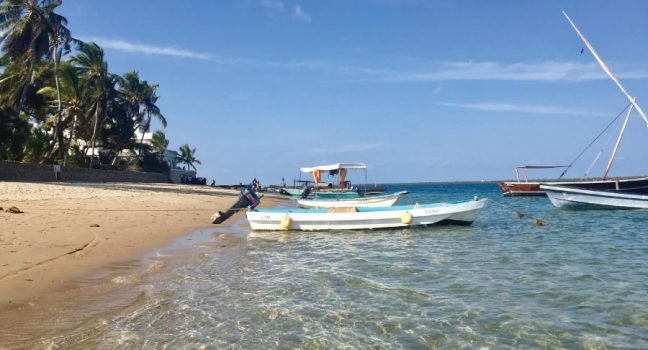
THE salty breeze whipped the canvas sail taut, sending the small wooden ship forward. High above the deck, clinging to the mast, a lookout scanned the horizon for land, straining his eyes against the glare of the Indian Ocean. It was the 15th century C.E., and these sailors were searching for the island of Lamu.
Gold, ivory, spices, and slaves—Africa provided them all. Lured by Africa’s treasures and the urge to explore, hardy men sailed to the East African coast from faraway countries. Sailors braved turbulent seas and gusty winds in search of treasures. Crowding into cramped wooden sailing vessels, they set out on journeys of great length.
Midway up the East African coast, a small group of islands, the Lamu archipelago, provided these seafaring travelers and their frail ships a deep, safe harbor protected by coral reefs. Here sailors were able to resupply their vessels with fresh water and food.
By the 15th century, the island of Lamu was established as a prosperous trading and supply center. Portuguese sailors arriving there in the 16th century found wealthy merchants wearing silk turbans and flowing caftans. Gold bangles adorned the arms and ankles of perfumed women as they moved through the narrow streets. All along the dock, sailing ships with their lateen sails furled sat heavy in the water, loaded to capacity with goods destined for foreign lands. Slaves tied together and huddled in groups waited to be herded onto dhows.
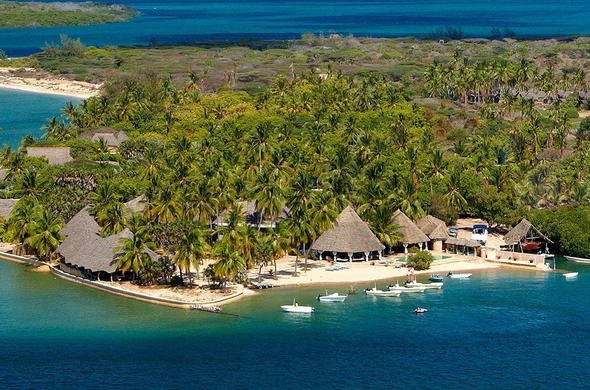
The early European explorers were surprised to find a high level of sanitation and architectural design in Lamu. Seafront homes were built with coral blocks chiseled by hand from local quarries, and heavy wooden doors, exquisitely carved, guarded their entryways. Houses were situated in well-arranged rows designed to allow cool sea winds to blow through the narrow streets and provide relief from the sweltering heat.
Homes of the more affluent inhabitants were large and spacious. Bathrooms were supplied with fresh water piped through rudimentary plumbing systems. Waste removal was equally impressive and more advanced than that of many European countries at the time. Large ducts, carved out of stone, sloped toward the sea and carried wastewater to deep soak pits that were placed far away from sources of fresh water. The stone cisterns that supplied the homes with fresh water contained small fish that would feed on mosquito larvae, thus keeping the biting insects at bay.
By the 19th century, Lamu was supplying oceangoing dhows with ivory, oil, seeds, animal hides, tortoiseshell, hippo teeth, and slaves in large quantities. In time, however, Lamu’s prosperity began to wane. Plague, raids from hostile tribes, and restrictions placed on the slave trade diminished Lamu’s economic importance.
Stepping Into the Past
Sailing into the port of Lamu today is like stepping back in history. The wind blows steadily from the great blue expanse of the Indian Ocean. Gentle turquoise waves pulse against sandy white beaches. Wooden dhows of ancient design glide along the coast, their triangular white sails resembling butterflies on the wing. Laden with fish, fruit, coconuts, cows, chickens, and passengers, they head for the port of Lamu.

Local man wearing traditional wear at the lamu Island
At the dock, palm trees rustling in the hot breeze provide scant shade for the men unloading the wooden vessels. The market bustles with people noisily bartering for commodities. These traders are seeking, not gold, ivory, or slaves, but bananas, coconuts, fish, and baskets.
In the shade of a huge mango tree, men plait long ropes from sisal fiber and mend the cloth sails that propel their wooden dhows. Streets are narrow and filled with people moving in all directions. Merchants clad in their long, flowing white robes call from their cluttered shops, beckoning customers to come in and examine their wares. A donkey, straining to pull a wooden cart loaded with heavy sacks of grain, threads its way through the flow of people. Lamu’s inhabitants move from one part of the island to another on foot, for there are no motor vehicles on the island for transportation. Access to the island is only by boat.
When the sun reaches its zenith at midday, time appears to stand still. In the oppressive heat, few people move about, and even the donkeys stand motionless with their eyes tightly shut waiting for a reprieve from the heat.
As the sun begins to descend and the temperature goes down, the sleepy island comes alive. Merchants swing open their heavy carved doors to resume business, and they will continue burning their lamps until late at night. Women bathe their small children and rub them with coconut oil until their skin glistens. Sitting on mats woven from coconut fronds, women also begin food preparation. Here they still cook on open fires, preparing delicious meals of fish seasoned with aromatic spices and rice cooked in coconut milk. People are friendly, hospitable, and easygoing.
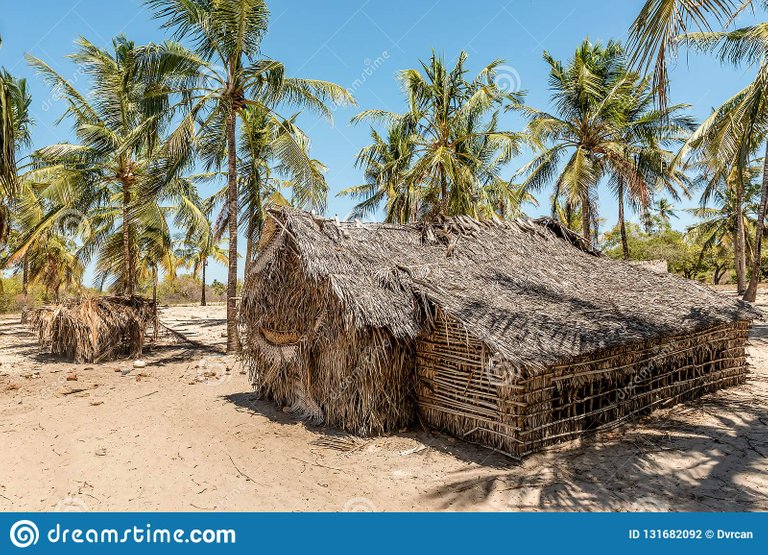
Palm trees houses in lamu island in kenya
Although Lamu has lost its former splendor, traditional pre-20th-century African culture still flourishes here. Under the warm tropical sun, life continues just as it has for many centuries. Here one can visit the past and the present together. Indeed, Lamu is a unique survivor of a bygone age, an island lost in time.
Our Visit to LAMU
Not too long ago, a group of us made a visit to Lamu, but it was not for the purpose of buying or selling goods. We went to visit our brothers and sisters, fellow servant of God. Our light aircraft flew north over the rugged Kenyan coastline. Far below, gentle waves rolled onto a shoreline of rich, green tropical forests fringed with a ribbon of white sand. Then, seemingly out of nowhere, we saw the islands of the Lamu archipelago glistening like jewels in the turquoise sea. Like a huge African eagle, we circled the islands and then dropped from the sky, landing on a small airstrip on the mainland. We disembarked, walked to the water’s edge, and boarded a wooden dhow for the trip to Lamu.
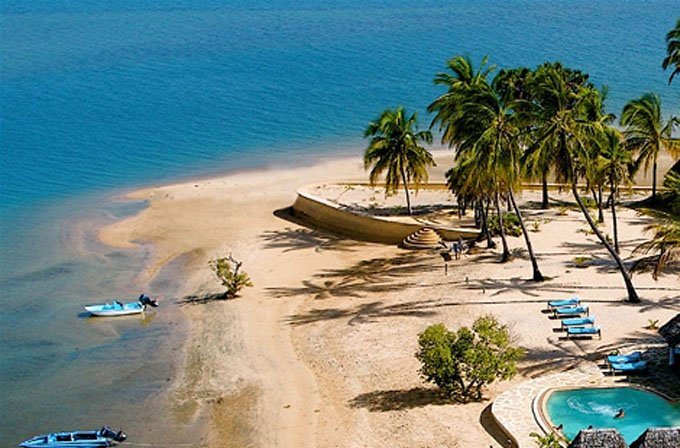
Shela beach at Lamu island
It was a beautiful sunny day, and the sea wind was warm and fresh. As we approached the island, we noticed that the jetty was bustling with people. Strong backs lifted heavy loads from the boats, and women carried their wares balanced delicately on their heads. Carrying our baggage, we pushed our way through the crowd and stood under the shade of a palm tree. Within minutes, our brothers spotted us, and we were warmly welcomed to their island home.
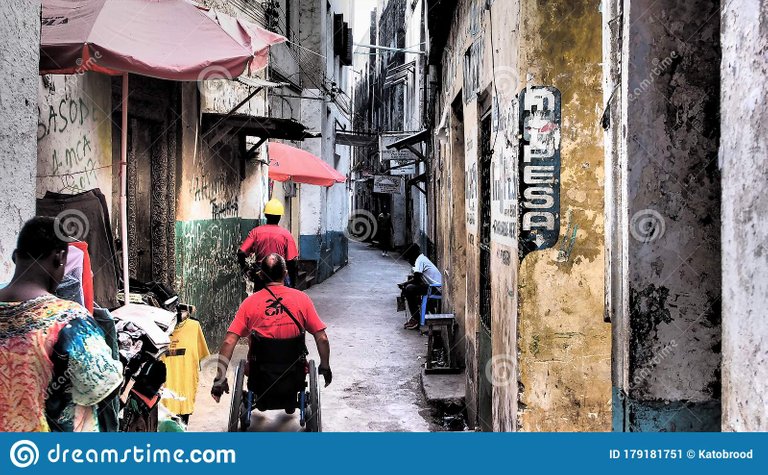
A man in a wheelchair moving the street of lamu
The deserted road that greeted us was hot and dusty. Walking through uninhabited bush country, we were advised to keep our eyes open for wild animals, including the occasional elephant crossing the road. The brothers were cheerful and happy as we walked slowly to our destination.
Thanks for your precious time, but please have you read about the Faeroe Island? Can read it here:https://steemit.com/hive-184437/@agodaniel32/a-visit-to-faeroe-islands-uniquely-connected. Hope you would follow,comment and upvote me for more.
Source
Plagiarism is the copying & pasting of others work without giving credit to the original author or artist. Plagiarized posts are considered fraud and violate the intellectual property rights of the original creator.
Fraud is discouraged by the community and may result in the account being Blacklisted.
If you believe this comment is in error, please contact us in #appeals in Discord.
Hi! I am a robot. I just upvoted you! I found similar content that readers might be interested in:
https://www.jw.org/en/library/magazines/g20000322/Lamu-An-Island-Lost-in-Time/